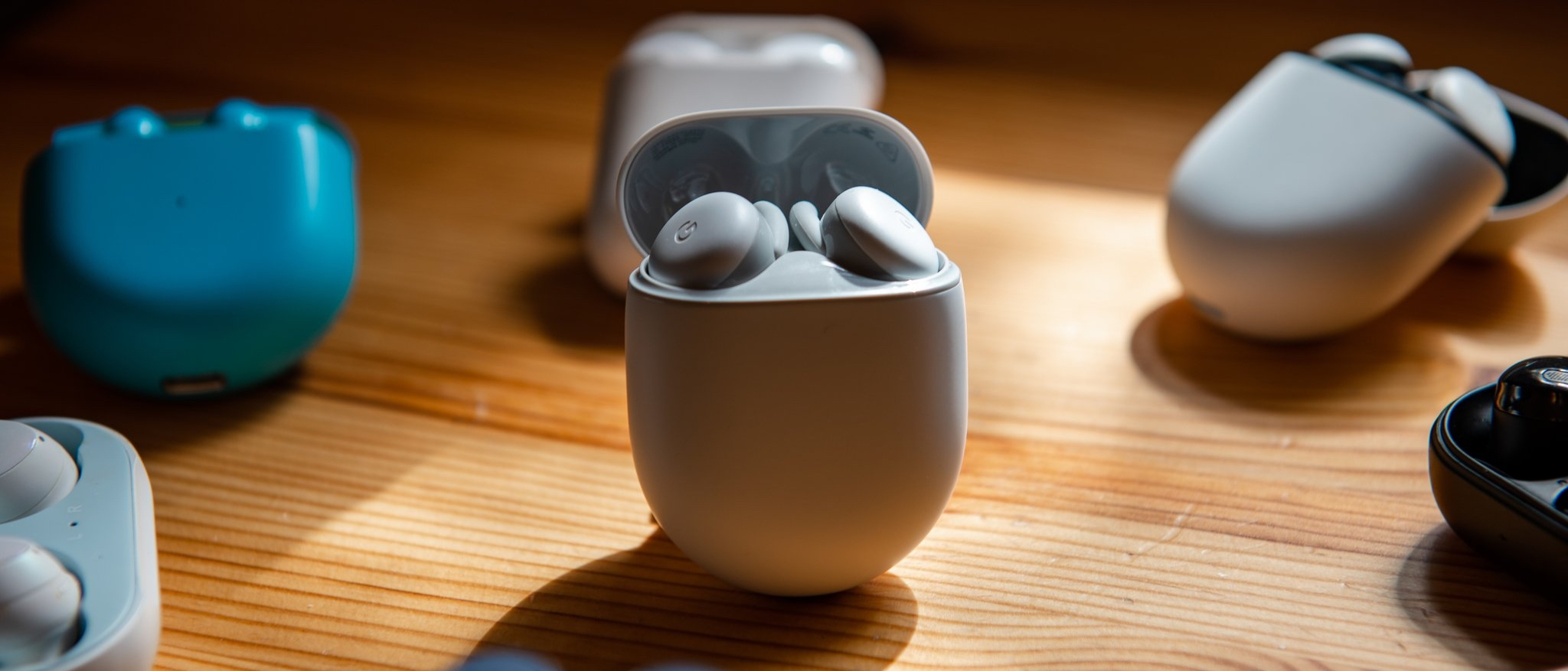Android Central Verdict
At $100, Google's Pixel Buds A-Series live up to the value-but-not-cheap reputation forged by the Pixel A phone line. Excellent sound and comfort combine with useful features like always-on Google Assistant and a superb onboarding experience, which forgive a lack of wireless charging and active noise cancelation.
Pros
- +
Superb comfort for most people
- +
Very good sound quality for the price
- +
Always-on Google Assistant is super useful
- +
Solid connectivity, unlike more expensive Pixel Buds
Cons
- -
Glossy plastic looks cheap
- -
Battery life is just OK
Why you can trust Android Central
The life cycle of a Google hardware product usually takes one of two directions: it starts full of bugs and slowly, with software updates, ends up being a solid product with a whiff of reputation damage; or it starts seemingly flawless and, over time, loses its luster as small issues crop up and don't get solved.
The company's first true wireless earbuds, 2020's Pixel Buds, were the latter. In April 2020, as the pandemic started raging across the country, Google appeared triumphant as early reviews praised the earbuds' sound quality, comfort, and general ease of use. But it became quickly apparent that users would discover endemic connectivity issues as they spent more time wearing their new buds. Google chalked it up to early firmware and promised fixes, but even after several updates, the problems have yet to fully abate — even today, Google's support forums are full of posts about the Pixel Buds' choppiness.
For that reason, I waited as long as possible to review the new Pixel Buds A-Series, which Google says it has inoculated against similar connectivity problems in a few important ways. The good news is that after more than two weeks of daily use in and out of the home, in locations where the original Pixel Buds always give trouble, the A-Series, despite their lower price, have yet to experience so much as a crackle or dropout. The better news is that, but for a couple of features, the Pixel Buds A-Series are nearly identical to the Pixel Buds in all of its positive attributes.
That makes these, at $100, one of the best true wireless earbuds you can buy — as long as you are OK with a few notable compromises.
Google Pixel Buds A-Series: Price and availability
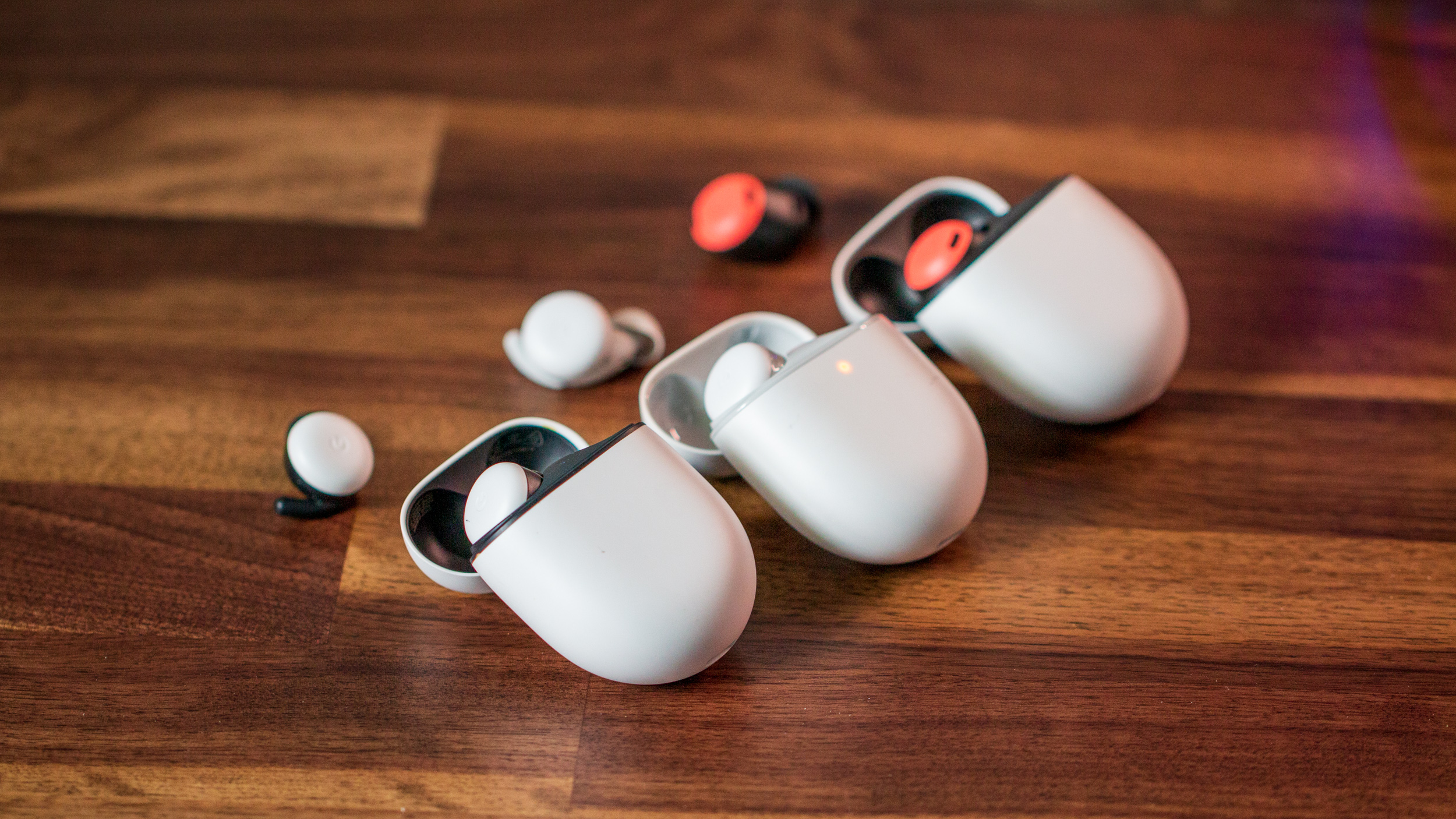
The Pixel Buds A-Series were announced on June 3, 2021, and released on June 17 in the US and Canada. More countries will be added to the roster in the coming months. Available for $100 USD and $140 CAD, the Pixel Buds A-Series debuted $80 cheaper than their Pixel Buds counterparts, though the older, more expensive model is available cheaper at some retailers.
You can get the Pixel Buds A-Series in four colorways: Clearly White, Dark Olive, Charcoal, and Sea. Since the original release, Google hasn't seen the need to offer an upgraded iteration of these earbuds, and most recently introduced the Sea color option following the announcement of the Pixel 7a at I/O 2023.
Google Pixel Buds A-Series: Hardware and design
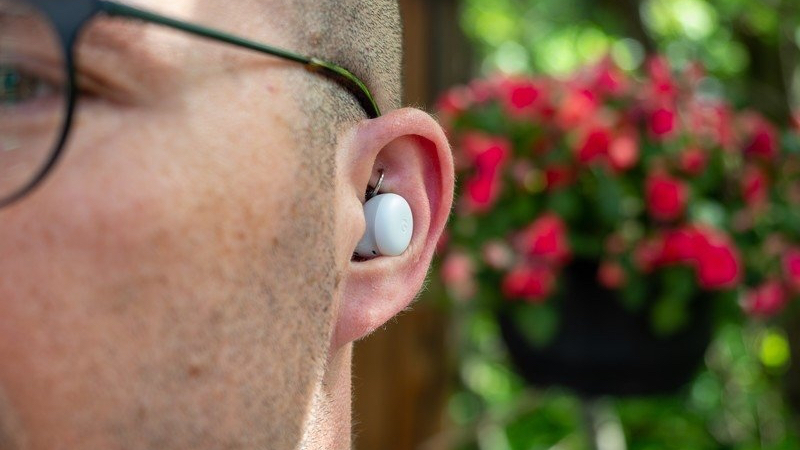
The Pixel Buds A-Series look almost exactly like the 2020 Pixel Buds, which means they look very much like true wireless earbuds designed by Google. The rounded plastic exterior, complete with a "G" logo, is completely touch-sensitive, allowing for single, double, and triple taps — though, unlike last year's model, no swipes for volume adjustment.
Get the latest news from Android Central, your trusted companion in the world of Android
With the A-Series, Google's gone with a less contrast-heavy color palette, which is fine, but what I'm less enamored of is the cheap-looking glossy plastic, both on the buds themselves and the inside of the otherwise well-designed case.


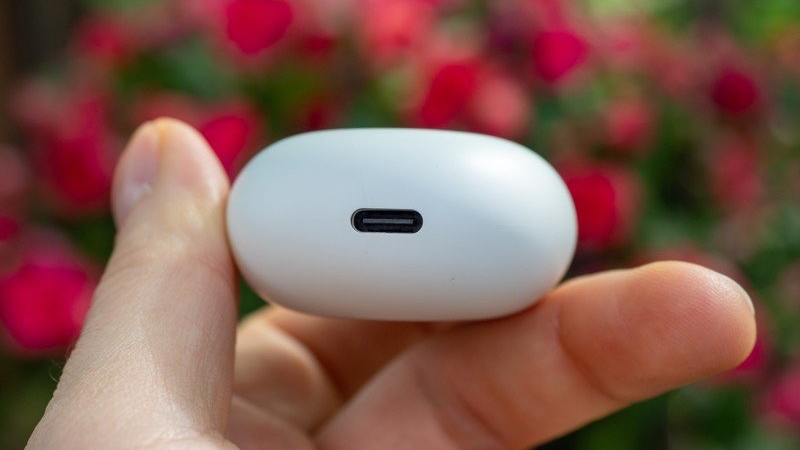
The buds fit in my ears perfectly, and I'd venture to say they're going to fit in yours just as well, too. That's because Google is, in addition to offering three silicon tip sizes, insisting on the placement of a permanent "fin" that sits inside the ear concha, keeping the bud from shifting around. In my wearing, these proved to be, like their predecessors, among the most comfortable earbuds I've ever worn for long periods, with a complete absence of pain or fatigue.
The venting makes these among the most comfortable earbuds I've ever worn, but that comfort comes at the expense of isolation.
That's partly due to the earbud's semi-open design; while sticking them in your ear canal produces a seal, there is a vent on the underside of each bud that releases some of that traditional pressure caused by traditional closed earbuds. It's a compromise, though, because that vent also means the Pixel Buds let in more outside noise than many of its competitors, which, combined with a lack of active noise cancelation, make them less suitable for some loud environments. The buds are IPX4 rated, too, which makes them appropriate for workouts and other outdoor activities, but I wouldn't risk a dip in the pool or any other form of immersion.
Google didn't mess with a good thing when it came to the case, which though a few grams lighter (the buds themselves are slightly lighter too), is still a great fidget toy thanks to the satisfying magnetic clunk of the lid. The earbuds rest gently in their charging cradles, and while the case lacks wireless charging, they top up relatively quickly over USB-C.
Google Pixel Buds A-Series: Sound quality & features
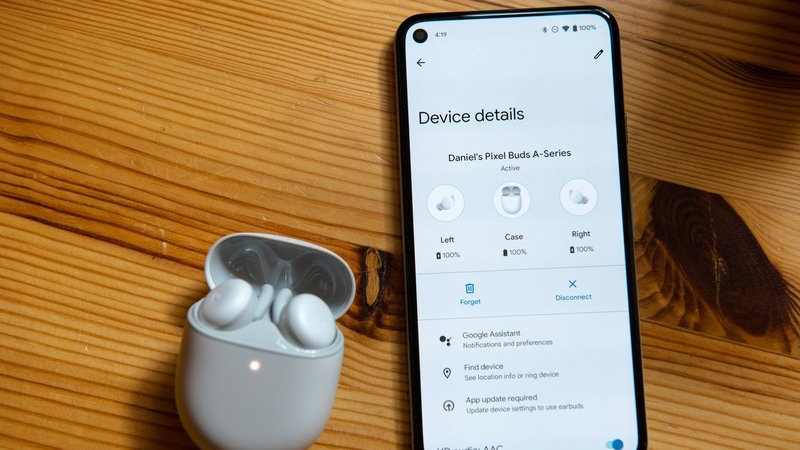
Despite the A-Series' $100 price point, Google didn't compromise on the sound quality. I asked the company whether they used the same 12mm drivers as the more expensive Pixel Buds and got a confirmation, but the sound signatures aren't identical. I'm glad I'm not the only one who experienced this — other reviewers said the same thing — though I wouldn't go so far as to say the earbuds sound "hollow" like I read at a few other places.
The Pixel Buds A-Series have a neutral sound signature that doesn't emphasize bass, which can come across as tonally underwhelming or boring depending on the source material. But the default equalization also means they're not fatiguing, and the A-Series shipped with the same "Bass Boost" feature that eventually came to the regular Pixel Buds last August. That little low-end bump does wonders for hip-hop and house music, though I wouldn't necessarily recommend these if your primary concern is big, thumpy electronic tracks.
But in December 2021, Google brought out few new features to the Pixel Buds A-Series, which included additional bass controls. With a slider that can be adjusted from -1 to +4, there is the potential of twice as much bass as was available previously using the simple "Bass Boost" toggle.

To save a few dollars, Google removed one of the Pixel Buds' sensors when designing the A-Series, and there's also one fewer microphone. Unfortunately, that means you lose out on the so-called Attention Alerts, which stand in for a traditional transparency mode on the Pixel Buds. I never really found Attention Alerts all that useful, though, limited as they are to "baby crying, dog barking, and emergency vehicle siren," according to the August 2020 documentation.
These are as plug-and-play as it gets on an Android phone, and the sound quality is just as accessible, though it won't blow you away.
The sensor removal doesn't affect any of the A-Series' abilities, though: there's still auto-play/pause when one bud is removed, which I love, and always-on Google Assistant is still one of the Buds' marquee features — more necessary now because it's the only way to adjust volume without using your phone. Note, though, that once Google Assistant is enabled, there's no way to completely disable the "ping" that arrives with an incoming notification — you can disable the assistant from reading them as they come in, but you're stuck with your source lowering in volume slightly for an instant whenever your coworker messages you on Slack. Not ideal.

I spent a lot of time using a single Pixel Bud for Google Meet calls connected to my MacBook, or walking outside listening to podcasts, and really enjoyed the experience. Callers told me that the sound quality was "AirPod-level," which I find difficult to believe, but I recorded myself and played it back, and while I wouldn't necessarily agree, it's close enough. Definitely up there with Apple and Jabra.
What Google is missing compared to those more expensive earbuds, and even some at the $100 mark, is active noise cancelation. As pleasant and clean-sounding as the A-Series are, if you're using them in noisy environments, there are probably better options out there.
Google Pixel Buds A-Series: Connectivity & battery life

I'll be honest: I wanted to wait a few weeks after receiving the Pixel Buds A-Series because I got burned when using the Buds just over a year ago. So when I first started testing them, like everyone else, I had a pretty flawless experience. But it quickly became apparent there were hardware-related connectivity issues that flared up in areas of high 2.4Ghz interference. To this day, after half a dozen firmware updates, I can't reliably use the Pixel Buds outside without constant cutouts and syncing problems.
Thankfully, the A-Series solves the Pixel Buds' biggest issue: instability.
Those issues were caused by how the Buds connected to their source: the right bud connected to the phone, and the left one routed through the right one as in a relay. This used to be the way all true wireless earbuds connected to phones and computers, and while that didn't necessarily pose connectivity trouble, it certainly increased the risk in areas of interference or where the signal wasn't strong enough for the relay to be maintained.

Google told Android Central that they fixed these problems in two ways, first by using a stronger amplifier than in the previous-gen model, and second by routing each bud independently to the phone. And I'm happy to say it worked. After two weeks of daily listening, I've yet to have a single moment of crosstalk or interference, and not one disconnection.
Where I haven't seen any improvement over the original Pixel Buds is battery life. Each bud is rated for five hours, and the case adds an additional 19 hours. That's a fine number, but I was hoping that Google could eke an extra hour or two with a more efficient chip powering them. Alas, five hours is all you get.
Finally, I want to talk about Fast Pair. Now the Pixel Buds are obviously no longer the only Fast Pair-enabled true wireless earbuds, but they work extremely reliably on any Android phone you open the case near. Your phone detects their presence, they quickly pair, and on a Pixel phone, the app is already preloaded, and you're ready to go; on another Android phone, you're required to download the Pixel Buds app to change features.
Google Pixel Buds A-Series: Competition
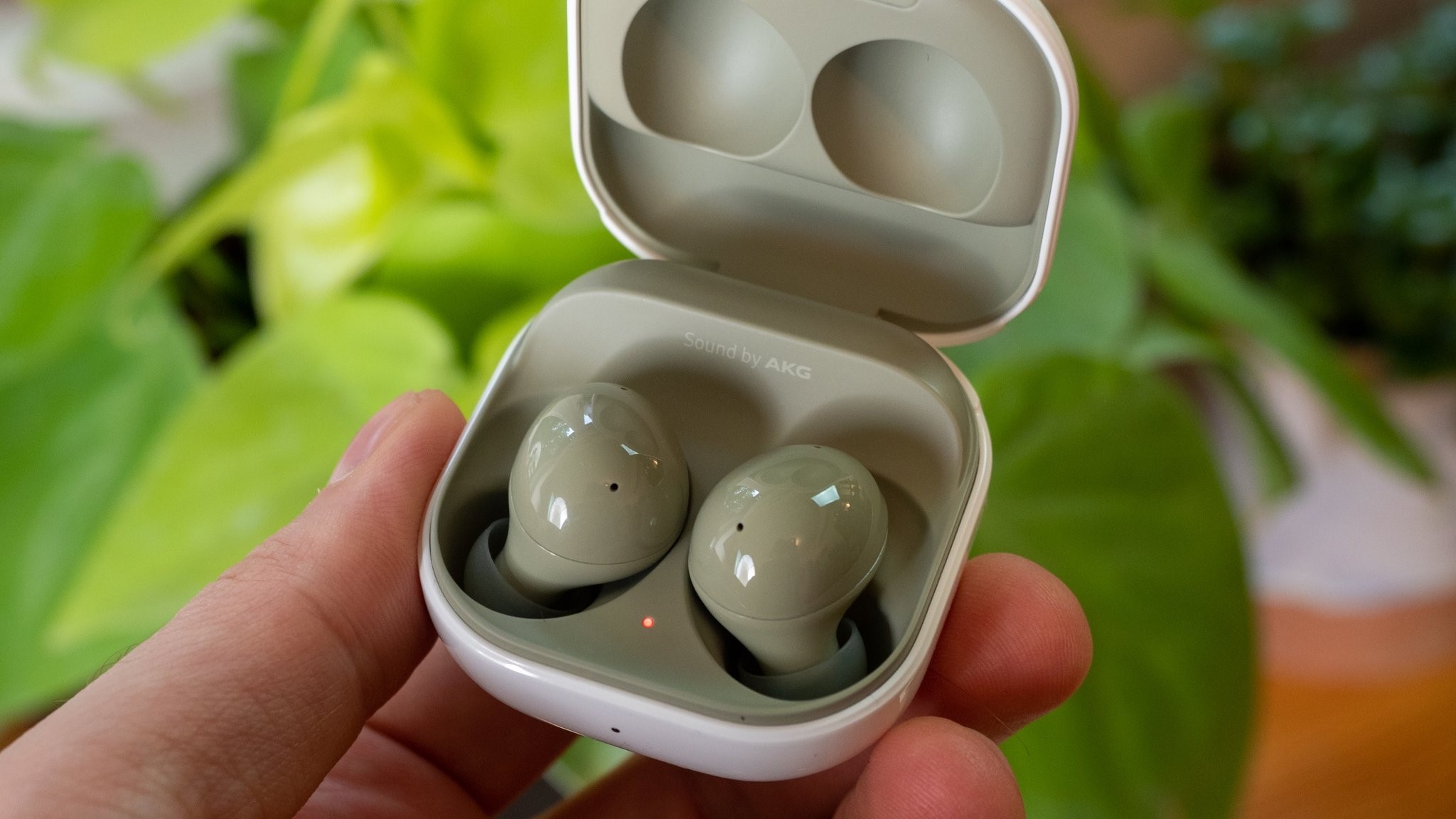
The under-$100 tier of the true wireless earbud market has exploded over the past couple of years, as upward pressure from Amazon-first companies in the low-end — Tozo and Anker, among many others — meet downward pressure from last-generation brand names — Samsung and Jabra — in the high-end.
At $100, the Samsung Galaxy Buds 2 are the closest well-known competitor to the Pixel Buds, offering a similar approach in terms of sound and Android integration, though obviously more highly optimized for Samsung devices. I find the Buds 2 far less comfortable than the Pixel Buds A-Series, and Bixby is far less useful than Google Assistant, but the Samsung product nearly doubles the battery life of the Google ones, and they have a proper transparency mode, along with wireless charging.
If you want to keep the comfort but add ANC, Anker's Soundcore brand has a lot to offer. I really like the Jabra Elite 4 earbuds, also $100 right now, which offer a similar in-ear design but sound fuller than the A-Series, especially in the low-end, and have more customization thanks to an EQ personalization feature in the app. Plus, they have very decent active noise cancelation.
Lastly, you might just be better served by saving a few more doubloons and grabbing the Pixel Buds Pro. These were released in July 2022 and have become a staple for many looking for the best wireless earbuds. You'll enjoy everything from incredible battery life to a familiar fit, and there's even multipoint connectivity built-in. But the best part is that the Buds Pro can regularly be found on sale for between $140 and $160, and we would go so far as to say that the extra few bucks is worth it.
Google Pixel Buds A-Series: Should you buy it?

You should buy this if ...
- You want a comfortable pair of true wireless earbuds for an Android phone
- You want always-on Google Assistant
- You want clean, accessible sound quality without boominess
- You want to avoid the connectivity problems of the Pixel Buds (2020)
You shouldn't buy this if ...
- You need active noise cancelation
- You need all-day battery life
- You want aptX codec support
I'll be honest: I didn't anticipate liking the Pixel Buds A-Series as much as I do. Granted, the 2020 Pixel Buds nailed a lot of the fundamentals, but at $180, they stuck out as lacking one feature, ANC, that many of its competitors were already jamming in for the same price. That and the endemic connectivity issues (which persist today) made me wary of a successor. Retaining most of the core features that made the 2020 Pixel Buds so good, solving the dropouts, and dropping the price to $100 was enough for me to give these an unqualified recommendation.

Still an incredible value
At $100, Google's Pixel Buds A-Series live up to the value-but-not-cheap reputation forged by the Pixel A phone line. Excellent sound and comfort combined with useful features like always-on Google Assistant and a superb onboarding experience forgive a lack of wireless charging and active noise cancelation.

Daniel Bader was a former Android Central Editor-in-Chief and Executive Editor for iMore and Windows Central.
- Andrew MyrickSenior Editor — Smartphones (North America), Chromebooks & Tablets
- Chris WedelSmart Home Writer
